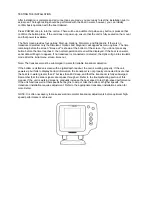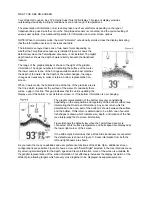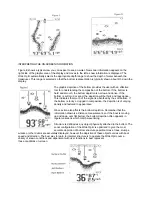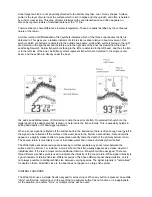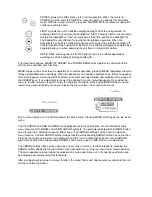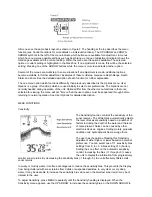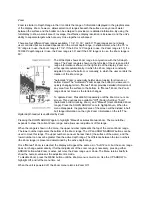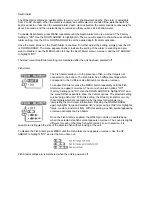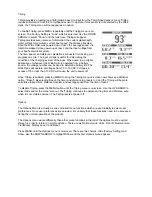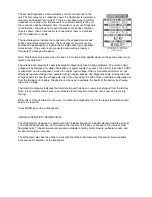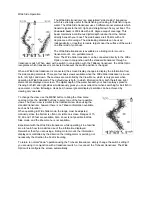
CUSTOMIZING SET-UP FUNCTIONS
The Wide Optic allows the user to customize many features to work best for a particular type of use.
These user selections are remembered by the unit after power is disconnected. Control of these features
is accomplished through the menu system. Primary menu functions include Sensitivity, Depth Range,
Zoom, Depth Alarm, Fish Alarm, Triplog (if the Temp/Speed sensor is connected) and Options.
The Options menu is a grouping of user preferences which are normally set initially but not typically
needed in the normal operation of the product. Options are accessed in one of two ways. At powerup,
direct access to the Options menus is given on the start-up screen. This is a quick way to adjust user
options before beginning normal operation. Also, as mentioned, the Options menus are part of the normal
menu system and is accessible any time.
Options allows the user to select the units of measurement for speed, the method of depicting fish
targets, the basic screen layout and size of numeric information, selection of non-standard transducers,
adjust the speed of update of the display, and reset of all variables to Factory Settings.
IMPORTANT A transducer must be connected to the Wide Optic in order to retain user settings selected
when in simulator mode. If no transducer is detected, the unit will default to factory options when powered
off.
Refer to Menu Functions for detailed information of User Options.
USING DIAGNOSTIC
The Wide Optic contains a powerful diagnostic tool which can aid in
determining the cause of a problem. To enable Diagnostic, power the
unit on and use the DOWN ARROW button to highlight the Diagnostic
option on the initial screen. Diagnostic can only be accessed at power-
up.
After the menu times out, the first of two diagnostic screens will appear.
Upon enabling diagnostic, the Wide Optic will perform a selftest. This
test confirms the operation of all internal circuitry. At the conclusion of
the test, one of two messages will appear; "passed" indicates that the
internal test discovered no failures. "Failed" indicates that a significant
internal problem was discovered and the unit will require factory service.
In conjunction with the failed indication will be a code which indicates to
the repair personnel where the problem is.
Even if the self-test is passed, other messages may be present to indicate an abnormal situation.
Examples of these are high-voltage and lowvoltage shut down indications. The Wide Optic will shut down
to protect the inner circuitry if the input voltage exceeds 16 VDC or is less than 10 VDC. If either of these
conditions cause the unit to shut down, a message will indicate this.
NOTE: Powering the unit off will reset these messages.
Press MENU to advance to the second Diagnostic screen.
Summary of Contents for Wide Optic
Page 1: ......

